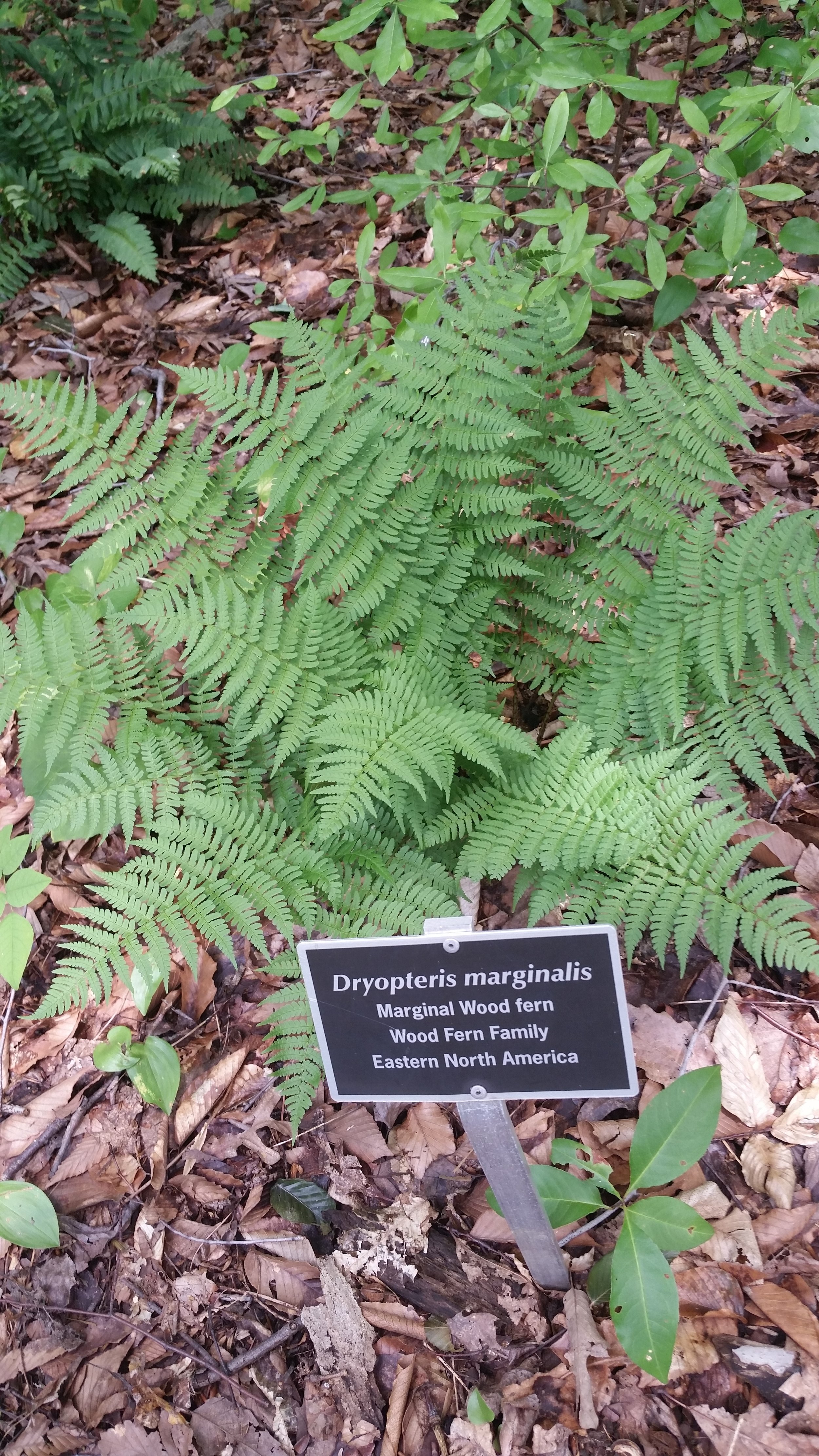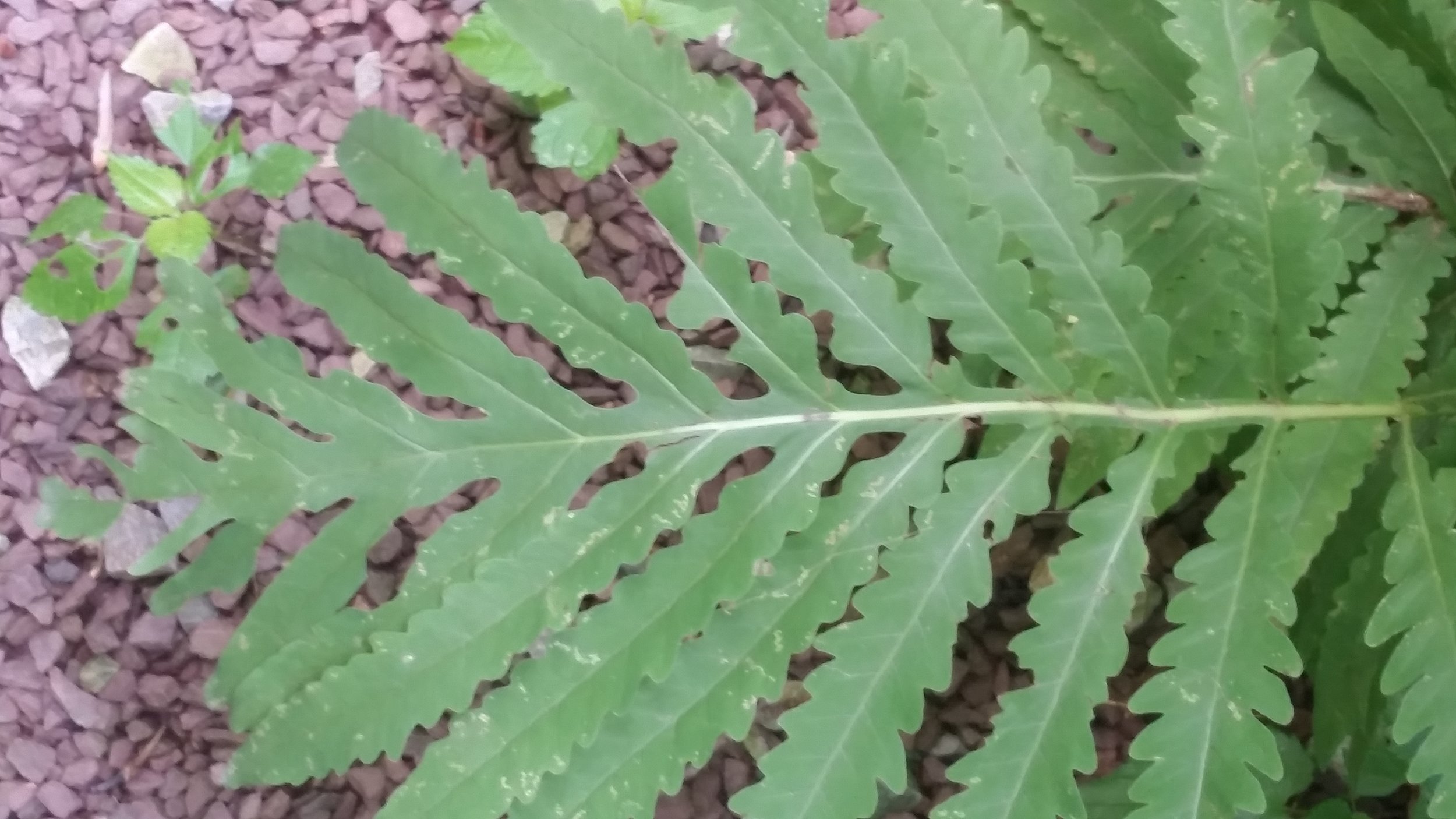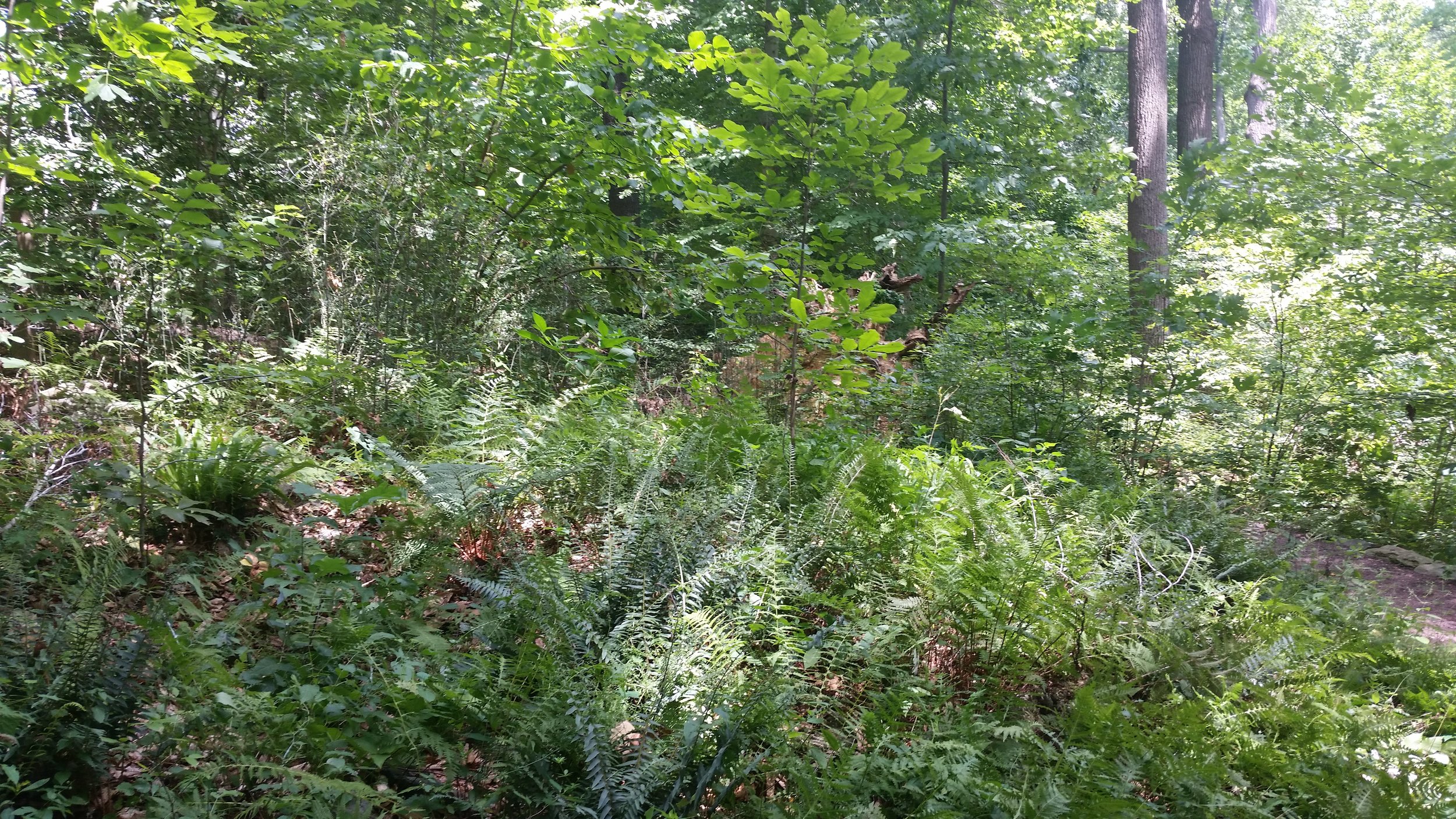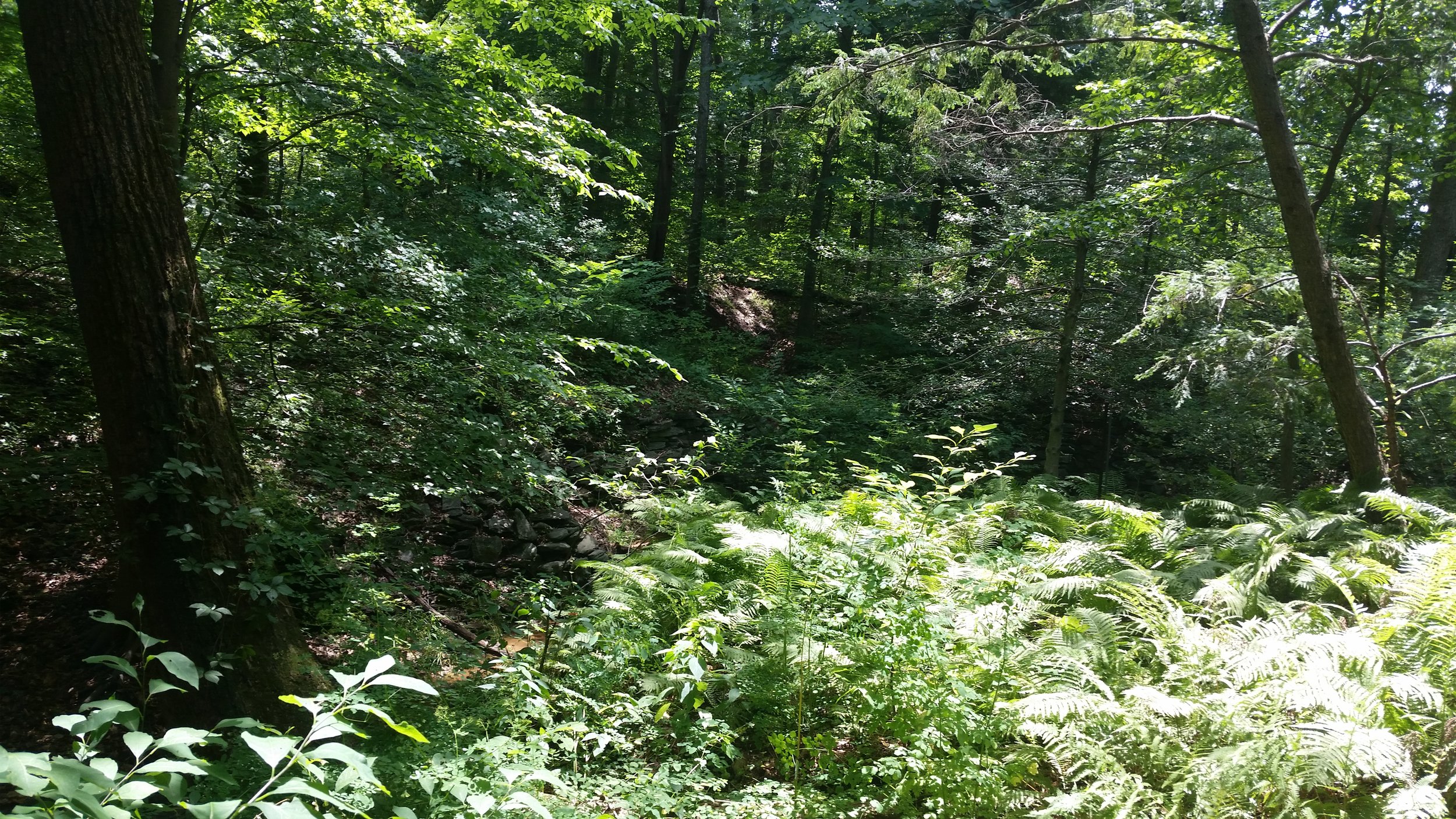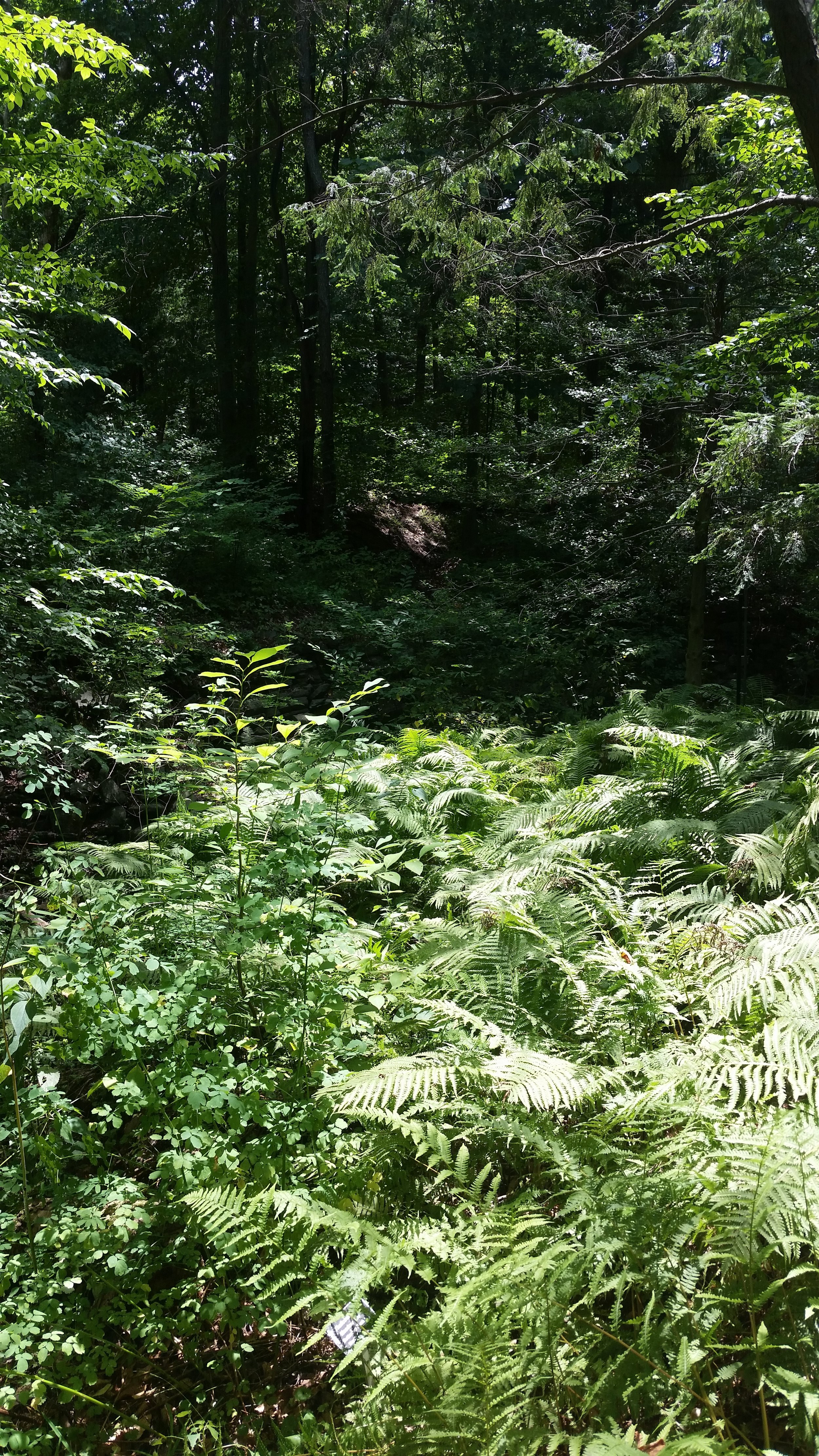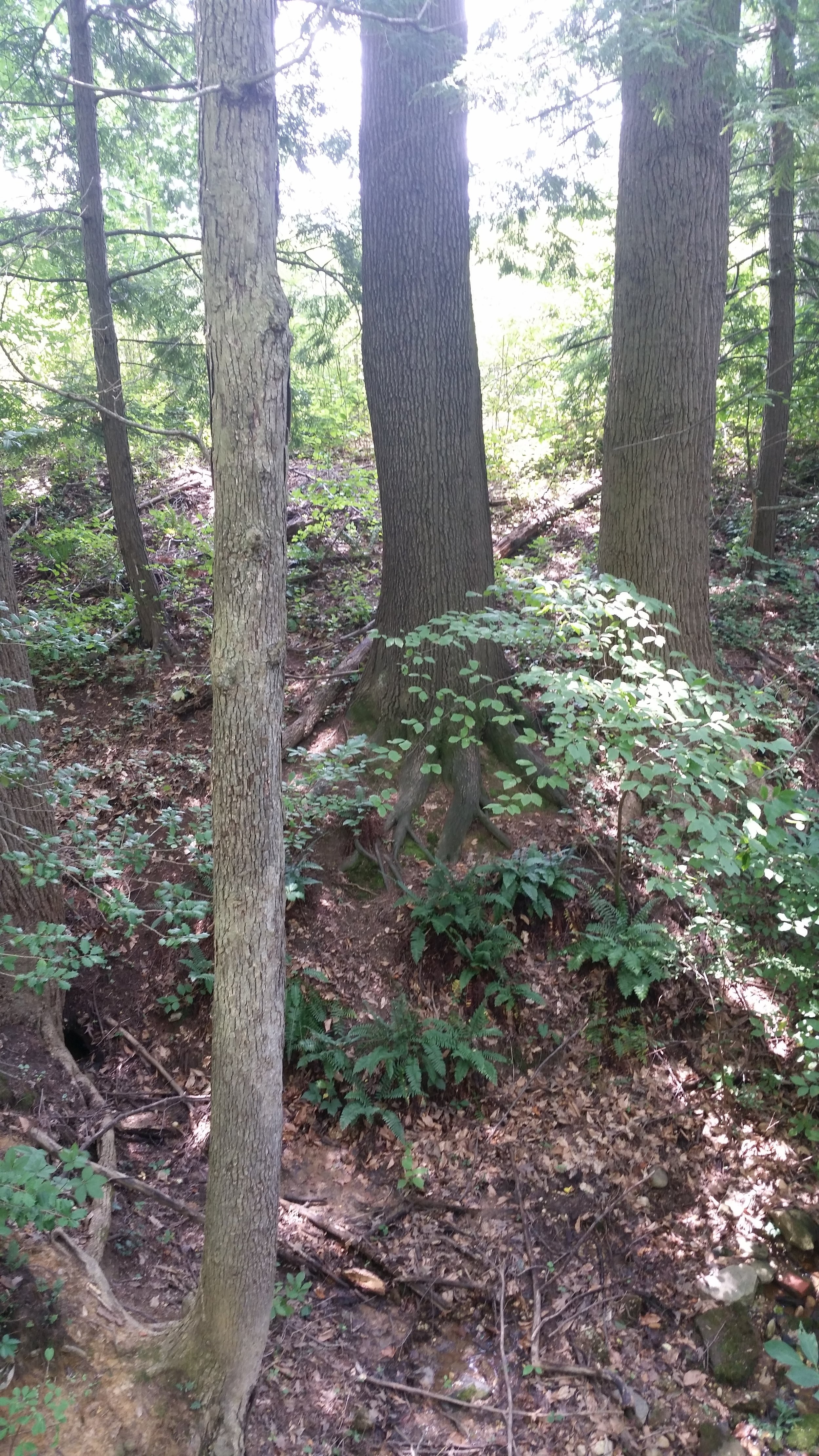Click above to see photos from Fern Valley, a native plant collection at the U.S. National Arboretum. At a half-day training on fern ID by Dr. Sara Tangren I learned a simple but helpful trick for selecting the best ferns for a home garden. Ferns tend to be either clumping or colony forming. If you want dense cover in a shady area that will keep out weeds, a colony forming fern like the Ostrich fern is great. Clumping ferns like the evergreen Christmas fern are best mixed with other shade plants. They won't spread and compete with their companions.
Fern Valley was created in 1959 by members in local garden clubs who rescued native plants being destroyed by new development in areas such as Tysons Corner in Virginia. The National Capital Area Federation of Garden Clubs in collaboration with the Arboretum have created a naturally wooded area underplanted with native wildflowers, ferns and shrubs along a stream valley. Plants are placed in a natural setting to represent plants of the Piedmont, Atlantic coastal plain, Southern mountains, and lowlands.
A fern is a vascular plant that reproduces by spores rather than seeds. There are about 10,560 known extant fern species with about 50 native fern species commonly found in our area.
Diagram from the helpful pocket-sized booklet, Fern Finder by Anne C. and Barbara G. Hallowell. It includes a key to ID common ferns of central and northeastern U.S. and Canadian ferns.
According to Wikipedia: Ferns first appear in the fossil record 360 million years ago in the late Devonian period, but many of the current families and species did not appear until roughly 145 million years ago in the early Cretaceous, after flowering plants came to dominate many environments. The fern Osmunda claytoniana is a paramount example of evolutionary stasis; paleontological evidence indicates it has remained unchanged, even at the level of fossilized nuclei and chromosomes, for at least 180 million years.
Osmunda claytoniana is native throughout much of Eastern North America. I've decided to try to find one for my garden as homage to a plant that has remained unchanged for 180 million years. Photo below is of this fern which is commonly known as the interrupted fern since it has a section along its rachis (stem) of fertile pinna which drop off leaving an interrupted section mid-blade. Another native fern which looks similar is the Cinnamon fern, Osmundastrum cinnamomeum.
We'll be including multiple native fern species in the shade garden that we will be planting next spring at Pleasant View. If you have a native fern you'd like to share let me know and we'll transplant it next spring to Pleasant View. A reminder -- always buy your native plants from a reputable dealer or transplant from a friend but never dig up native plants from the wild.
